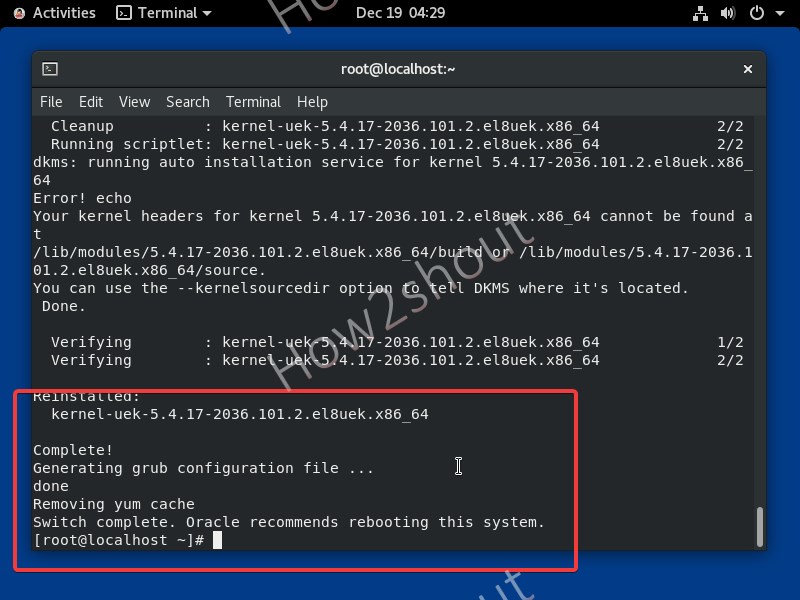

You can also use multiple grep command separated by pipe to simulate AND scenario.
CENTOS GREP USAGE HOW TO
Note: Using regular expressions in grep is very powerful if you know how to use it effectively. $ grep -E 'Manager.*Sales|Sales.*Manager' employee.txt The following example will grep all the lines that contain both “Manager” and “Sales” in it (in any order). The following example will grep all the lines that contain both “Dev” and “Tech” in it (in the same order). Grep -E 'pattern1.*pattern2|pattern2.*pattern1' filename But, you can simulate AND using grep -E option. $ grep -e Tech -e Sales employee.txtĥ00 Randy Manager Sales $6,000 Grep AND 5. Use multiple -e option with grep for the multiple OR patterns. grep -e pattern1 -e pattern2 filenameįor example, grep either Tech or Sales from the employee.txt file. Use multiple -e option in a single command to use multiple patterns for the or condition. Using grep -e option you can pass only one parameter. $ egrep 'Tech|Sales' employee.txtĥ00 Randy Manager Sales $6,000 4.

Just use the | to separate multiple OR patterns. egrep 'pattern1|pattern2' filenameįor example, grep either Tech or Sales from the employee.txt file. So, use egrep (without any option) and separate multiple patterns for the or condition. Grep OR Using egrepĮgrep is exactly same as ‘grep -E’. $ grep -E 'Tech|Sales' employee.txtĥ00 Randy Manager Sales $6,000 3. If you use the grep command with -E option, you just need to use | to separate multiple patterns for the or condition.įor example, grep either Tech or Sales from the employee.txt file. $ grep 'Tech\|Sales' employee.txtĥ00 Randy Manager Sales $6,000 2. Without the back slash in front of the pipe, the following will not work. grep 'pattern1\|pattern2' filenameįor example, grep either Tech or Sales from the employee.txt file. If you use the grep command without any option, you need to use \| to separate multiple patterns for the or condition. I prefer method number 3 mentioned below for grep OR operator. Use any one of the following 4 methods for grep OR. You already knew that grep is extremely powerful based on these grep command examples. The following employee.txt file is used in the following examples. The examples mentioned below will help you to understand how to use OR, AND and NOT in Linux grep command. But, you can simulate AND using patterns. Grep command often used with pipes.Question: Can you explain how to use OR, AND and NOT operators in Unix grep command with some examples?Īnswer: In grep, we have options equivalent to OR and NOT operators. $ grep -v bar /path/to/file Linux pipes and grep command For example print all line that do not contain the word bar: You can use -v option to print inverts the match that is, it matches only those lines that do not contain the given word.

$ grep -n 'word' /path/to/file Grep invert match Grep can report the number of times that the pattern has been matched for each file using -c (count) option:Īlso note that you can use -n option, which causes grep to precede each line of output with the number of the line in the text file from which it was obtained: $ egrep -w 'word1|word2' /path/to/file Count line when words has been matched $ grep -w "boo" /path/to/file Use grep to search 2 different words You can force grep to select only those lines containing matches that form whole words i.e. When you search for boo, grep will match fooboo, boo123, etc. $ grep -r "192.168.1.5" /etc/ Use grep to search words only read all files under each directory for a string “192.168.1.5” $ grep -i "boo" /etc/passwd Use grep recursively You can force grep to ignore word case i.e match boo, Boo, BOO and all other combination with -i option: Grep -color 'data' fileName How Do I Use grep To Search File? G/re/p grep Command Syntax grep 'word' filename The name, “grep”, derives from the command used to perform a similar operation, using the Linux text editor ed:


 0 kommentar(er)
0 kommentar(er)
